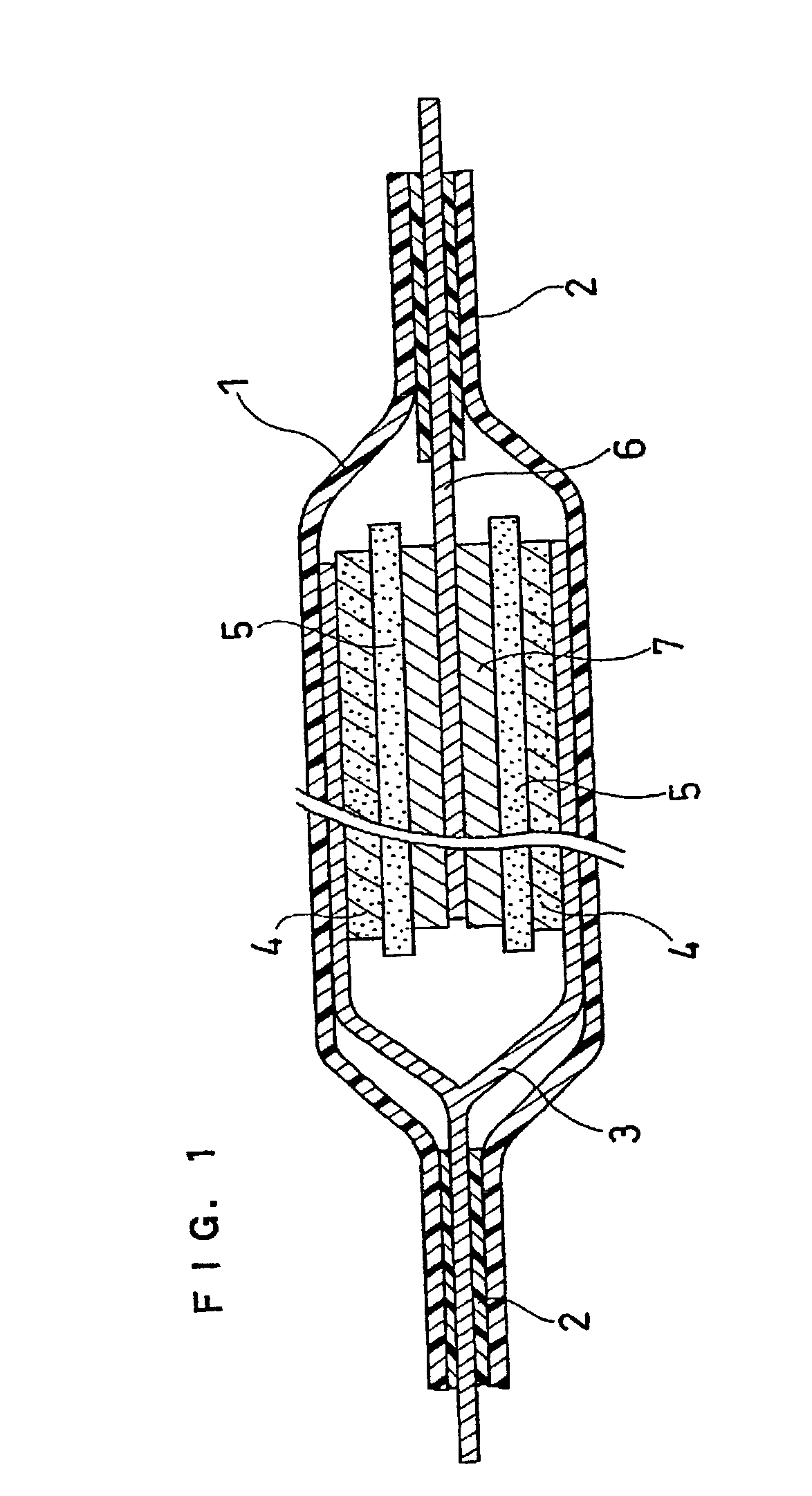Lithium polymer secondary cell
a secondary battery and lithium polymer technology, applied in secondary battery servicing/maintenance, cell components, sustainable manufacturing/processing, etc., can solve the problems of limited number of non-aqueous solvents, thermal stability problems of ethylene oxide type polymer, and inferior cycle stability of lithium polymer secondary batteries. to achieve the effect of improving cycle stability
- Summary
- Abstract
- Description
- Claims
- Application Information
AI Technical Summary
Benefits of technology
Problems solved by technology
Method used
Image
Examples
example 2
[0060] A lithium polymer secondary battery was produced in the same manner as in Example 1 except that a dimethacrylate comprising a polyalkylene oxide as the main chain and a trimethacrylate comprising polyalkylene oxides as the main chains were contained in the negative electrode paste at a ratio by weight of 3:1, and the ratio by weight of the methacrylates in each battery constituting element was changed. The ratio by weight of the methacrylates was: 50% by weight in the positive electrode, 30% by weight in the negative electrode and 20% by weight in the separator layers.
[0061] As the trimethacrylate comprising polyalkylene oxides as the main chains, used was a trimethacrylate having an average molecular weight of 1,200 and represented by the general formula: 1
example 3
[0062] A battery was produced in the same manner as in Example 1 except that the ratio by weight of the dimethacrylate in each battery constituting element was changed. The ratio by weight of the dimethacrylate was: 42% by weight in the positive electrode, 37% by weight in the negative electrode and 21% by weight in the separator layers.
example 4
[0063] A battery was produced in the same manner as in Example 1 except that the ratio by weight of the dimethacrylate in each battery constituting element was changed. The ratio by weight of the dimethacrylate was: 45% by weight in the positive electrode, 30% by weight in the negative electrode and 25% by weight in the separator layers.
PUM
| Property | Measurement | Unit |
|---|---|---|
| discharge terminate voltage | aaaaa | aaaaa |
| discharge terminate voltage | aaaaa | aaaaa |
| weight Wp | aaaaa | aaaaa |
Abstract
Description
Claims
Application Information
 Login to View More
Login to View More - R&D
- Intellectual Property
- Life Sciences
- Materials
- Tech Scout
- Unparalleled Data Quality
- Higher Quality Content
- 60% Fewer Hallucinations
Browse by: Latest US Patents, China's latest patents, Technical Efficacy Thesaurus, Application Domain, Technology Topic, Popular Technical Reports.
© 2025 PatSnap. All rights reserved.Legal|Privacy policy|Modern Slavery Act Transparency Statement|Sitemap|About US| Contact US: help@patsnap.com



